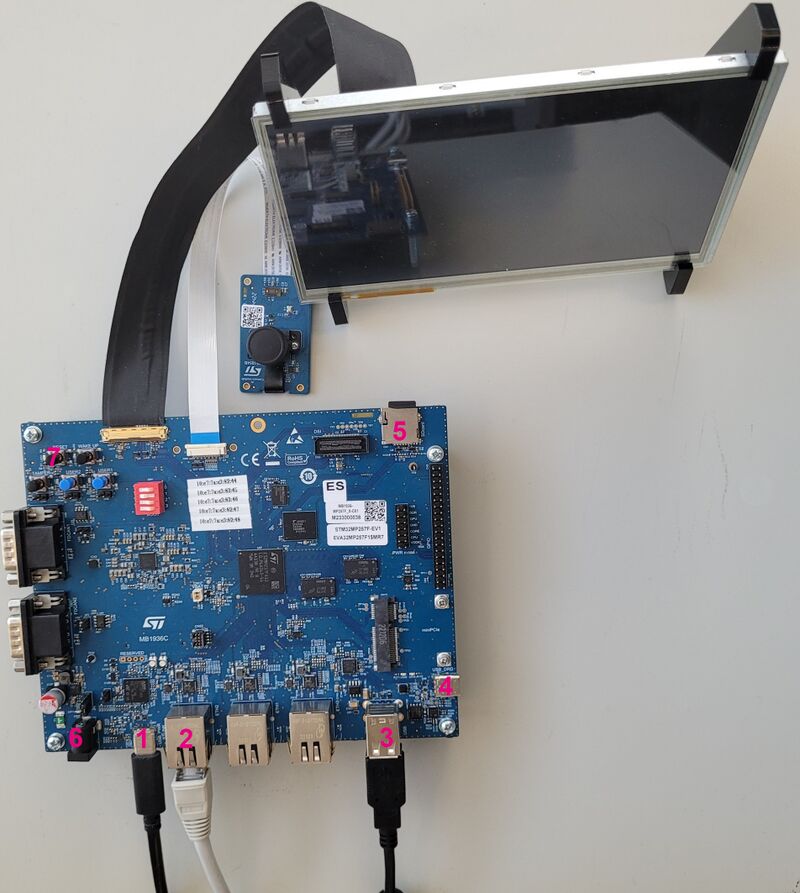This article aims to demonstrate how to configure an STM32MP257x-EV1 Evaluation board that has just been programmed and start it for the first time. It is valid for the STM32MP257F-EV1 ![]() Evaluation boards; the part numbers are specified in the STM32MP25 microprocessor part numbers article.
Evaluation boards; the part numbers are specified in the STM32MP25 microprocessor part numbers article.
When the image has been programmed on the STM32MP257x-EV1 Evaluation board, it is time to finalize the system configuration:
- Step 0: check that the LVDS display board is connected correctly.
- Step 1: check the configuration of the switches and jumpers:
- The boot-related switches must be configured so the device (for example, a microSD™ card) on which the image has been programmed is selected as the boot source.
- The figure below shows the boot switches for the recommended boot from the microSD™ card.
- Step 2 (optional): connect a USB keyboard and/or a USB mouse (not provided) using the USB type-A ports (#3 in the image below).
- Step 3 (optional): connect an Ethernet cable (not provided) to the dedicated connector (#2 in the image below).
- Step 4: if the flash memory device is a microSD™ card, check that it is inserted into the dedicated slot (#5 in the image above).
- Step 5: connect one of the following (and check the power jumper position):
- USB Power – Type-C® cable to the connector (#1 in the image above).
- Power supply (5V, 3A) to the power connector (#6 in the image above) of the MB1936 board.
- Step 6 (optional): install and configure a remote Terminal program (such as Minicom on Linux Ubuntu or Tera Term on Windows) on the host computer and connect the ST-LINK/V3 USB Type-C® port (#1 in the image above) to a host computer that runs a terminal program with the ST-LINK/V3 virtual port.
- Step 7: press the reset button (#7 in the image above) to reset the board .
The board boots and the system is available after a few seconds.

